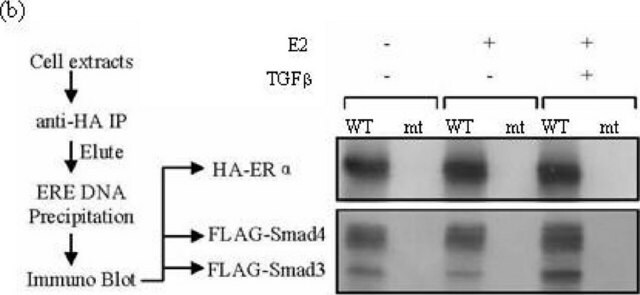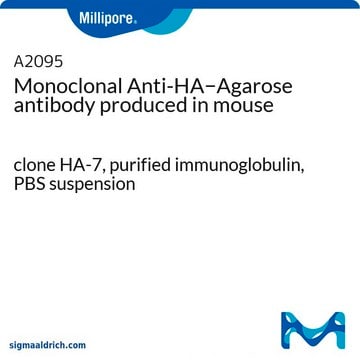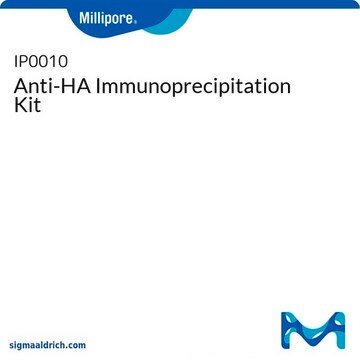12158167001
Roche
Anti-HA-Biotin, High Affinity (3F10)
from rat IgG1
Sinonimo/i:
antibody
About This Item
Prodotti consigliati
Origine biologica
rat
Livello qualitativo
Coniugato
biotin conjugate
Forma dell’anticorpo
purified immunoglobulin
Tipo di anticorpo
primary antibodies
Clone
3F10, monoclonal
Stato
lyophilized (stabilized)
Confezionamento
pkg of 50 μg
Produttore/marchio commerciale
Roche
Isotipo
IgG1
Sequenza dell’epitopo
YPYDVPDYA
Temperatura di conservazione
2-8°C
Categorie correlate
Descrizione generale
Specificità
Immunogeno
Applicazioni
- Dot blots
- ELISA (enzyme-linked immunosorbent assay)
- Western blots
It has also been used for immunocytochemistry, immunofluorescence and αScreen format based assay.[1][2][3]
Qualità
Nota sulla preparazione
Sample preparation: Prepare protein extracts containing the HA-tagged protein of interest using any of a variety of standard methods. The following lysis buffers have performed well and should be taken as guidelines:
- Bacterial extracts: 20 mM Tris, pH 8.0, 100 mM NaCl, cOmplete Protease Inhibitor Cocktail Tablets, followed by freeze-thaw.
- Mammalian extracts: 50 mM Tris, pH 7.5, 150 mM NaCl, 0.1% Nonidet P40, complete Protease Inhibitor Cocktail Tablets.
- Other cell lysis buffers may be more appropriate for individual applications. In general, to obtain optimal performance of the affinity matrix:
- Use protease inhibitors to reduce proteolytic activity. Use complete Protease Inhibitor Cocktail Tablets for most applications.
- Limit detergent to the lowest concentration levels necessary to obtain adequate cell lysis.
The following concentrations should be taken as a guideline:
- Dot blot: 100 ng/ml
- ELISA: 100 ng/ml
- Western blot: 100 ng/ml
Ricostituzione
Rehydrate for 10 minutes prior to use.
Altre note
Non trovi il prodotto giusto?
Prova il nostro Motore di ricerca dei prodotti.
Avvertenze
Warning
Indicazioni di pericolo
Consigli di prudenza
Classi di pericolo
Aquatic Chronic 3 - Skin Sens. 1
Codice della classe di stoccaggio
11 - Combustible Solids
Classe di pericolosità dell'acqua (WGK)
WGK 2
Punto d’infiammabilità (°F)
does not flash
Punto d’infiammabilità (°C)
does not flash
Scegli una delle versioni più recenti:
Possiedi già questo prodotto?
I documenti relativi ai prodotti acquistati recentemente sono disponibili nell’Archivio dei documenti.
I clienti hanno visto anche
Il team dei nostri ricercatori vanta grande esperienza in tutte le aree della ricerca quali Life Science, scienza dei materiali, sintesi chimica, cromatografia, discipline analitiche, ecc..
Contatta l'Assistenza Tecnica.














